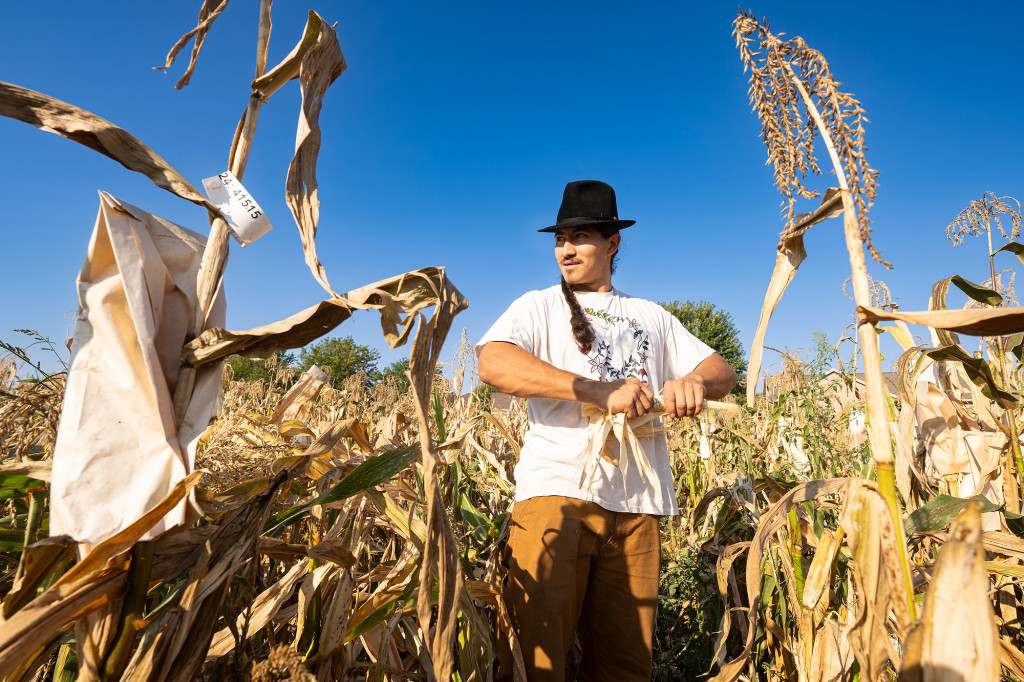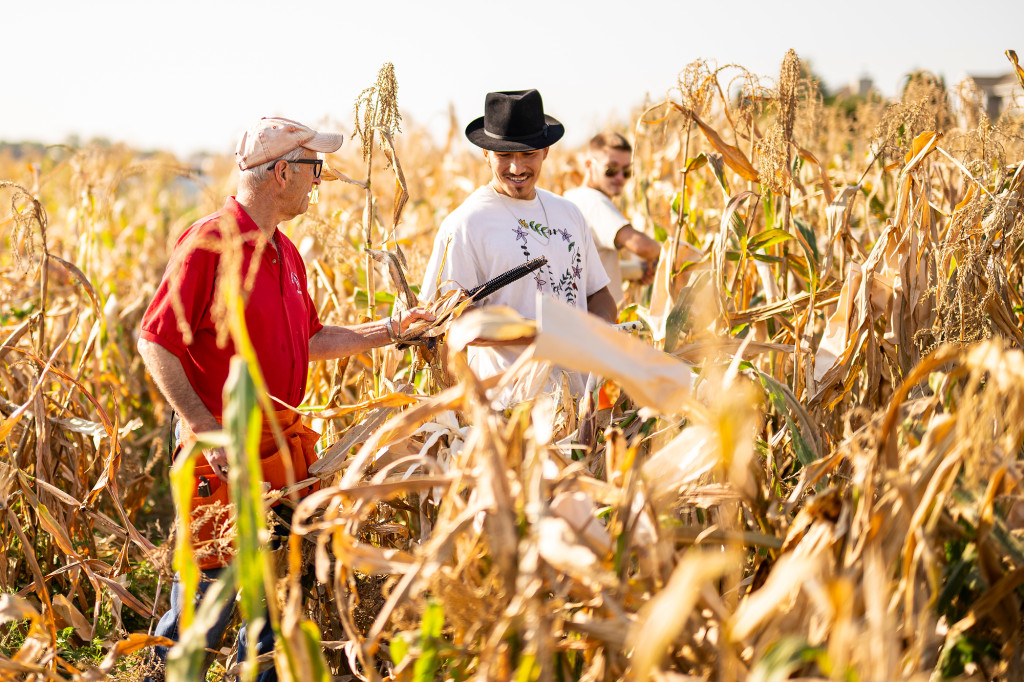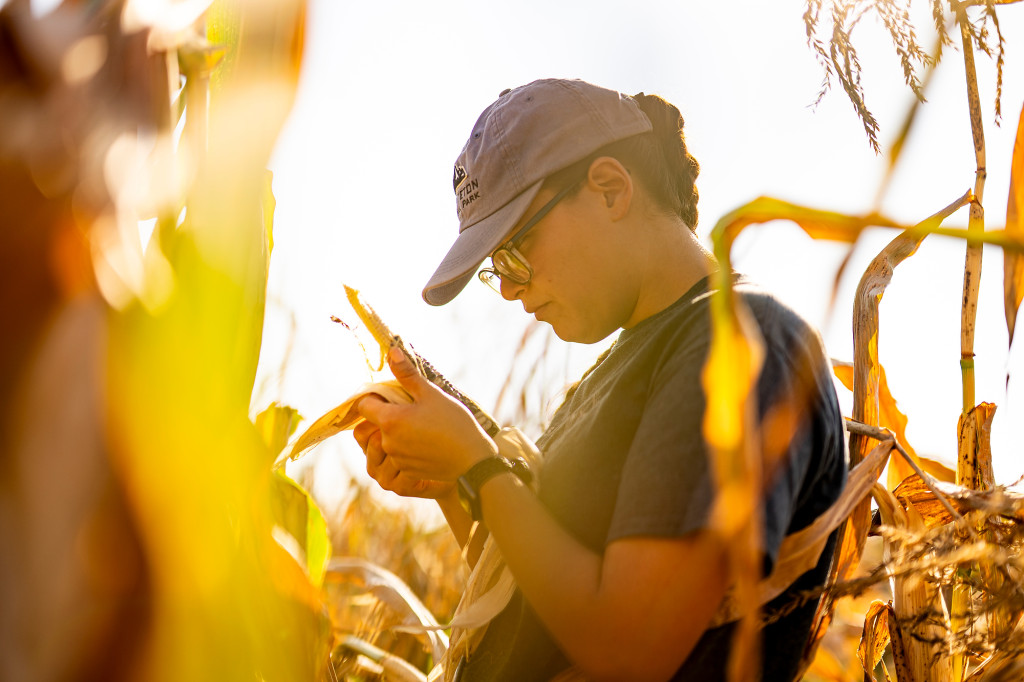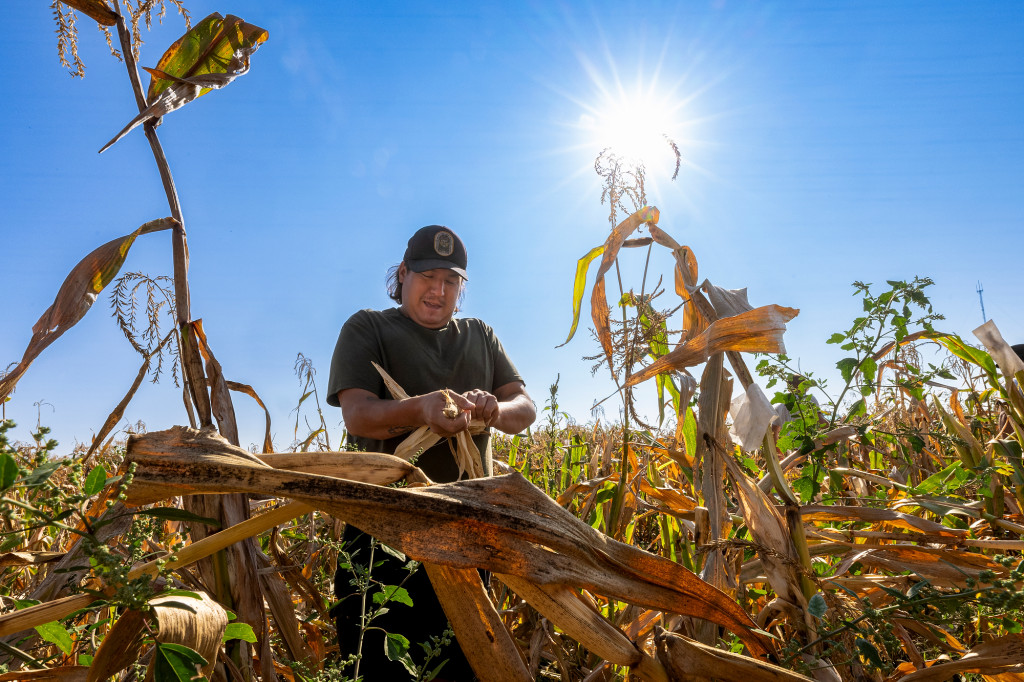UW–Madison, Ho-Chunk partner to increase seed stock of corn through traditional methods
Through a close partnership with Ho-Chunk tribal members, crop scientists at the University of Wisconsin–Madison have increased the seed stock of Ho-Chunk corn varieties for the tribe while maintaining traditional growing methods.
When the Ho-Chunk Nation Department of Agriculture discovered that some of its crop varieties were at risk, it found an eager collaborator in UW–Madison agronomy professor Bill Tracy.
The project is based at the West Madison Agricultural Research Station and is helping to protect and boost threatened corn varieties, including Ho-Chunk Speckled, Bronze Beauty and Ho-Chunk White. It is also now part of an expansive, USDA-funded effort between the university and Indigenous tribes to support their traditional food supply and expand food sovereignty.
As a plant breeder, Tracy would usually look at methods to genetically select and breed a corn variety to be more productive, sometimes by crossing one variety of corn with another. But while those methods may work for a commercial farm, Tracy knew they wouldn’t provide the traditional product the Ho-Chunk were looking for.
“There’s lots of ways to increase productivity without changing the [corn] variety,” says Tracy.
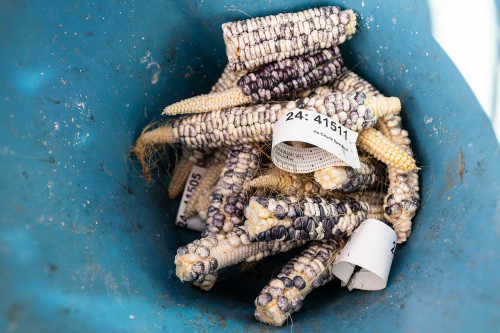
Ho-Chunk Speckled corn harvested at the West Madison Agricultural Research Station will be used for seed for next year’s crop. Photo: Bryce Richter
Instead, Tracy and his collaborators in the College of Agricultural and Life Sciences increased productivity by reducing tillage and soil disruption, planting cover crops and growing beneficial crops alongside the corn. The Ho-Chunk also expressed a strong interest in organic agriculture and avoiding herbicides. While that can create conditions for weeds in the field, they’re working together to find an effective solution. The team is also looking at ways to create or adapt machinery for farming in traditional ways.
The crop scientists and Ho-Chunk partners have gone to great lengths to prevent cross-pollination with the commercial corn that’s widely grown in Wisconsin, covering the ears of Ho-Chunk Speckled corn in bags. And then they carefully hand pollinate the corn with pollen only from the variety itself.
This year, they hand pollinated over 3,500 ears of corn. About 40 days after pollination, they harvested around 420,000 seeds, roughly enough to plant 30 acres of corn next growing season. As a result, the Ho-Chunk will begin growing Ho-Chunk Speckled corn on a larger scale in spring, using the seed that’s now in cold storage at UW–Madison.
Previously, the Ho-Chunk Nation Department of Agriculture was only able to plant about five acres each season.
Tracy stresses the importance of listening to and prioritizing the goals and needs of the Ho-Chunk partners. At the start of this project, there was apprehension among some of the Ho-Chunk communities about handing over their seed.
“One of the things I promised right from the very beginning is that all the seed would go back to them no matter what. I would not keep any seed,” Tracy says.
This project wasn’t just about science, Tracy says, but rather about the culture and humanity behind it.
“As a land grant faculty member, I really believe the job is about service,” Tracy says. “Native farmers are trying to do something good for their environment and they’re working very hard to do something good for their community. I’m passionate about helping them.”

Stalks of Ho-Chunk Speckled corn in the field. Photo: Bryce Richter

